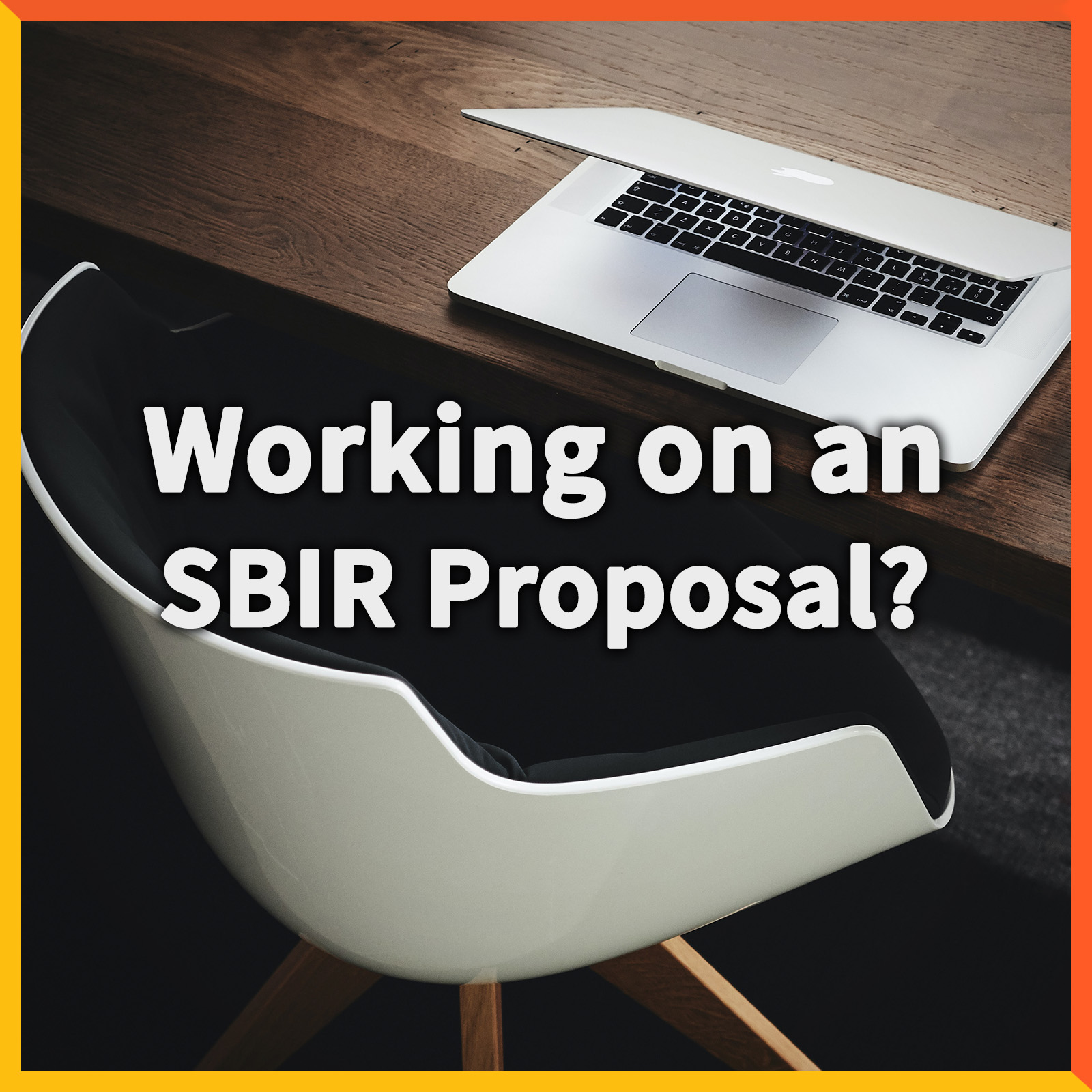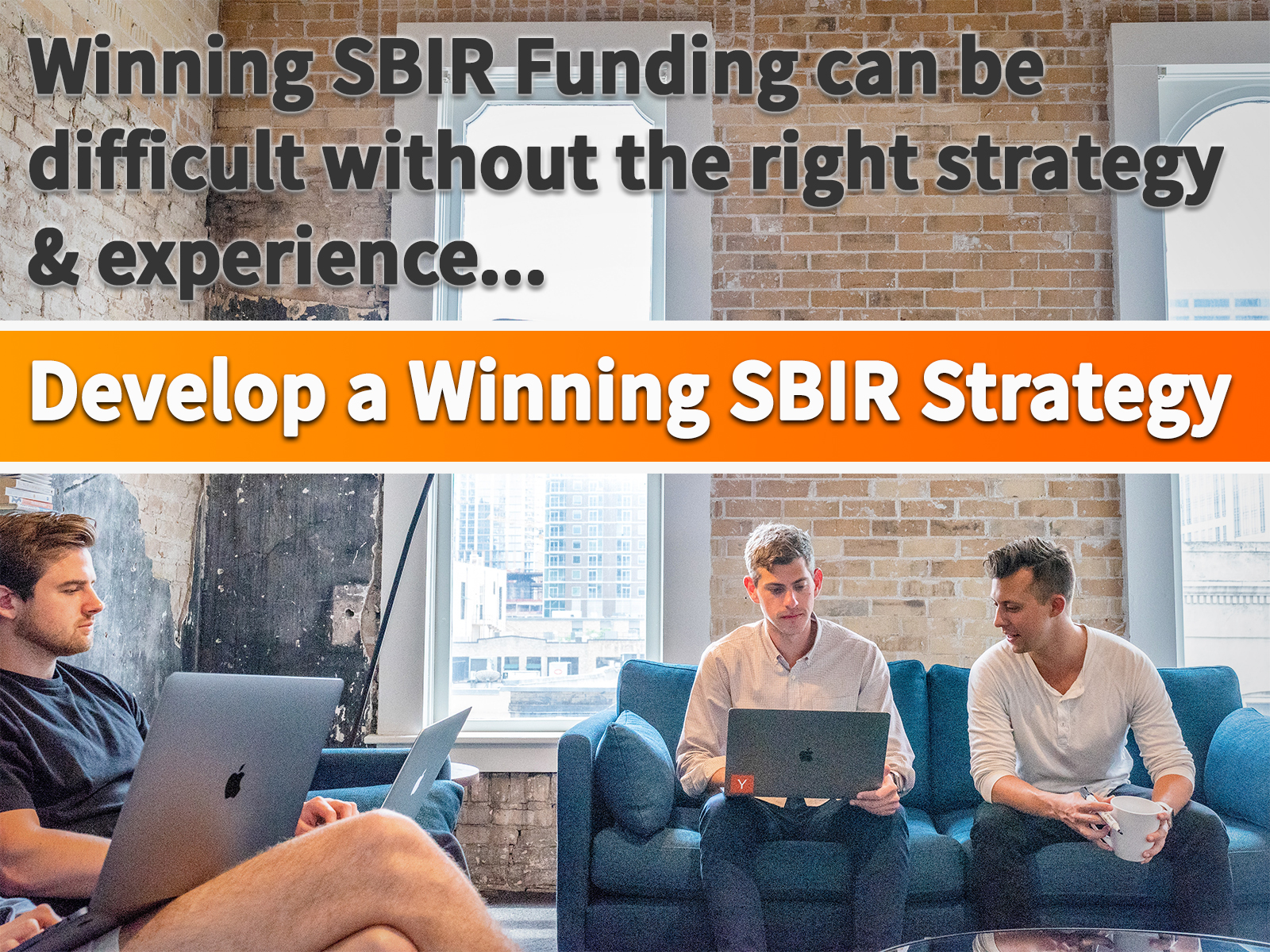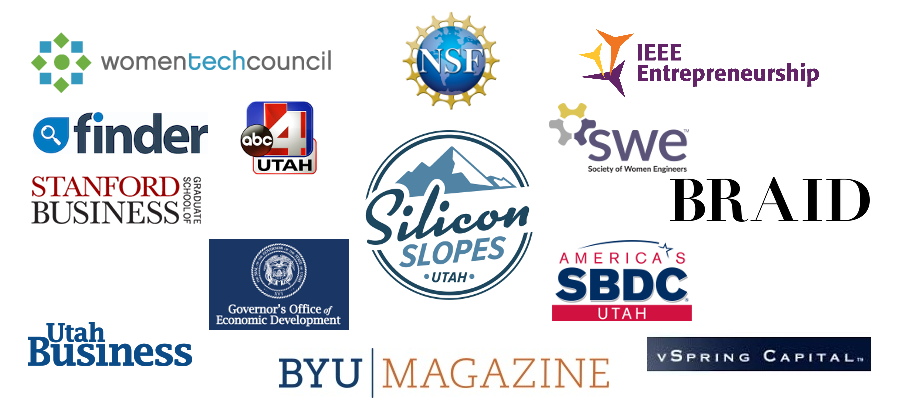One question that is often asked by SBIR / STTR proposing teams is whether a PhD is required as the PI, or on the team. The answer is, “it depends”. I’ll talk about this issue in general, and follow up with some suggestions on “what to do”.
Do you need a PhD as PI for your SBIR / STTR proposal?
If you are applying to NIH, they very much expect a PhD (or MD) to be the PI and/or key personnel. Their reviewers are researchers throughout the life sciences establishment. They like things to look just like university research, even if it is SBIR. If NIH is your target, then you probably already ARE part of the research establishment, but if not, you’ve got to convince them you know how to play by their rules.
 If you are apply to the NSF, it very much depends on the topic. For example some of the program directors believe that “the only good work is being done at universities”. Although this is a tragic belief, in my opinion, this is the belief currently with the AI and general software topics. So you’d better figure out how to leverage a university team or similar expertise. Other program directors are much more industry oriented and are focused on the commercial potential and commercial capability of the team.
If you are apply to the NSF, it very much depends on the topic. For example some of the program directors believe that “the only good work is being done at universities”. Although this is a tragic belief, in my opinion, this is the belief currently with the AI and general software topics. So you’d better figure out how to leverage a university team or similar expertise. Other program directors are much more industry oriented and are focused on the commercial potential and commercial capability of the team.
![]() Word from Program Directors overall is that they are becoming much more interested in Customer Discovery and Product Market Fit work done prior to any proposal that they receive. Obviously NSF is investing in I-Corps™, including about 25 slots per year for SBIR/STTR teams, and Phase I awardees go through the “Bootcamp” which is a light version of I-Corps™. NSF is also piloting some work on other elements of commercialization beyond customer discovery. But I have said for a long time, any team that has done genuine customer discovery work has a huge advantage!
Word from Program Directors overall is that they are becoming much more interested in Customer Discovery and Product Market Fit work done prior to any proposal that they receive. Obviously NSF is investing in I-Corps™, including about 25 slots per year for SBIR/STTR teams, and Phase I awardees go through the “Bootcamp” which is a light version of I-Corps™. NSF is also piloting some work on other elements of commercialization beyond customer discovery. But I have said for a long time, any team that has done genuine customer discovery work has a huge advantage!
Department of Ag program directors have been clear (to me directly) that at least some of their reviewers are university researchers and “they like to see themselves in proposals”.
 A DoD Technical Point of Contact (TPOC) said to me directly that if a proposing team is veteran led it will always be preferred to a non-veteran team. If you say that to the higher ups on the record, they “may” deny it, but the TPOC’s are surprised it’s even a question – of course a veteran will always have the advantage. So if you are not a veteran, bring one into the team (see below).
A DoD Technical Point of Contact (TPOC) said to me directly that if a proposing team is veteran led it will always be preferred to a non-veteran team. If you say that to the higher ups on the record, they “may” deny it, but the TPOC’s are surprised it’s even a question – of course a veteran will always have the advantage. So if you are not a veteran, bring one into the team (see below).
As a reminder, if you need to search for topics, get on our mailing list, below and watch your inbox for mid-month summaries of latest open solicitations. You can also search at https://www.sbir.gov/sbirsearch/topic/current although be sure to go to the original solicitation to make sure nothing’s changed.
So, what are you to do if you’ve found a strong topic, but you don’t have a specific attribute that is expected of that specific agency?
My favorite suggestion “Rent a PhD”.
Well, rent a PhD, an MD, a veteran or whatever expert profile you need. Now this can happen in several ways. First, it is not difficult to find university researchers willing to be a sub-awardee on an SBIR or STTR proposal, although it can take some time to get the paperwork done and the Work Plan has to reflect the sub-award. Any research money coming in helps their team and they are used to the uncertainty of proposals in process. So, look for teams doing work that you could use.
Plan to spend close to 1/3 of your SBIR budget or 40-60% of your STTR budget. I’ll note that this is a big chunk of your budget (and in Phase II can be 50% of the total award!) And I will also note that universities make negotiating the license exceptionally difficult (let me know in the comments if you know of an exception!). So don’t outsource the heart of your project to a university in case you can’t get a license done. Any work that a university team does is OWNED by the university, even though you brought the money in to fund it! But it does give you that “research” angle.
To beef up the credentials of your team, consider bringing on an expert as a consultant or advisor.
However, a way to still get the PhD/MD/veteran/expert cachet (and help) at a lower cost and with IP ownership (make sure it’s “work for hire!”) is to have a researcher/professor/veteran/expert join your team as a consultant or advisor. There are rules about consultants and their hourly rates (see the solicitation), but I’ve had PhD’s as consultants for less than 20 hours in a Phase I. But you still get to put their resume in your proposal, and you can have them do review work or research or something you need done. I will say that this may not be enough for an NIH proposal, but it might be.
Now, let’s be clear about the “advisor” thing. I highly recommend having a Board of Advisors (who are not fiduciaries) and giving them some equity to provide advice! However, if someone isn’t putting in time on the SBIR or STTR proposal, you’re not allowed to include their resume (although you can include them in the team description). But again, if you’ve got an advisor with relevant expertise, have them do a small consulting project to include them in the proposal.
If you haven’t gone through our SBIR course, Develop a Winning SBIR Strategy – Insights From The Review Process, I invite you to do so. Remember that my perspective as a reviewer of many, many proposals gives you an advantage as you prepare your Phase I and/or your Phase II proposal.
If you want more in depth help, either a proposal review or help developing your proposal, you can apply for a spot in our one-on-one VentureWrench SBIR Coaching after you’ve gone through the course. Email us at venturewrenchcommunity [at] gmail.com with questions.
And if you need help with any part of your SBIR process – proposal (Phase I or II), TABA, proposal management, or contract finalization, just email us at venturewrenchcommunity [at] gmail.com!
Don’t forget, if you need more help, check out our online course, Develop a Winning SBIR Strategy, and don’t forget your free guide below!

